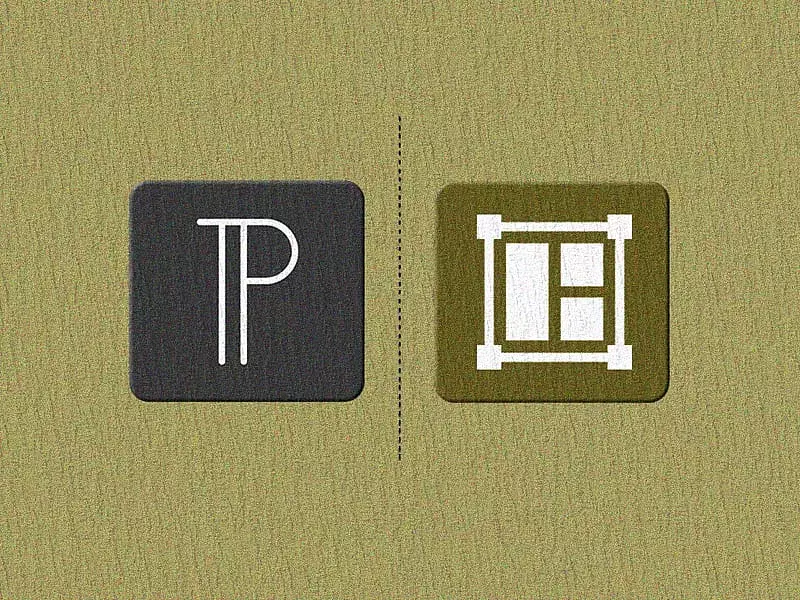Table of contents
- What are Decoupled Websites
- What is Decoupled Drupal
- Why some enterprises may still prefer traditional Drupal
- What makes decoupled Drupal the winning choice for B2B
- Frontend flexibility and performance
- Modern martech integration
- Omnichannel content delivery
- Scalability and future-preparedness
- Does Decoupled Drupal hurt SEO?
- So.. Traditional or Decoupled Drupal?
- Final thoughts
When you keep hearing the phrase “in the digital landscape,” it only means the world is moving forward towards a digital tomorrow. And so are businesses. The B2B world is transforming from static to dynamic interactions and real-time experiences.
The expectation is quite high – instead of product brochures and specs and filling out long contact forms, people now want tailored digital journeys that are responsive and intuitive to their needs, quickly and easily.
Drupal, as a CMS platform, is walking along with this transformation. Recent statistics say that 70% of digital agencies accelerated their development timelines by at least 25% after moving to decoupled CMS.* Powering beyond 400,000 enterprise websites, Drupal, as an open-source platform, continues to evolve, and therefore, decoupling as a strategy for B2B enterprises is the new norm to embrace agility, innovation, and scale.
In this blog, we’ll highlight the differences between traditional and decoupled Drupal, learn what decoupled Drupal is, and why you need it for your B2B organization.
What are Decoupled Websites
A decoupled website or app separates the front-end (what users see) from the back-end (where content is managed). Instead of being tightly connected (traditional approach), the two communicate through APIs.
The back-end handles content creation and storage, while the front-end focuses on how that content is displayed, often using modern JavaScript frameworks like React, Vue, or Angular.
What is Decoupled Drupal
Drupal is the operating engine of a powerful machine, also responsible for its design and controls. However, in a decoupled setup, Drupal’s main focus lies on managing and delivering content while modern JavaScript frameworks, such as React or Next.js, manage the user interface.
This setup allows marketers and developers to work independently while accelerating delivery and embracing modern UX capabilities. Drupal’s flexibility with JSON:API and GraphQL allows its frontend to easily find exactly what it needs. It’s cleaner, leaner, and purpose-built for complex, competitive enterprises.
Why some enterprises may still prefer traditional Drupal
While decoupled Drupal continues to gain momentum, traditional Drupal is far from obsolete. Some B2B brands still find value in their all-in-one setup, and let’s consider their reasons:
- Single editing and theming approach - Marketing teams can manage content and design from a single interface. There is no need for any external UIs or APIs for previews.
- Fine-tuned for SEO - Drupal’s tools, such as Metatag, Pathauto, and XML Sitemap, highlight the traditional approach to ensuring your content gets properly indexed with minimal setup.
- Faster set-up for smaller teams - Traditional Drupal can be quickly set up and running faster without having to manage two different codebases.
- Enterprise-grade security - Drupal’s built-in user role management and regular security updates make the traditional Drupal secure and scalable.
- Simpler architecture - Everything, including your content, layout, and rendering, lives in one place. Fewer moving parts mean easier setup and less overhead.
The final verdict in this regard can be that businesses that have limited development resources or simpler digital requirements can still work well with traditional Drupal.
What makes decoupled Drupal the winning choice for B2B
If you’re a B2B company, chances are you’ll be into managing multiple digital channels with your buyers expecting personalized digital journeys in real-time. A monolithic CMS could slow you down in your pursuit. This is where decoupled Drupal comes in. Let’s explore the capabilities of headless (decoupled) Drupal that make it the right fit for your business.
Frontend flexibility and performance
Your brand can be built with so much more than just templates. With decoupled Drupal, its flexibility with React, Vue, and Next.js, your developers can curate pixel-perfect interfaces while your marketing team enjoys its editorial power.
You get a better, more interactive UX with faster load times. Thanks to server-side rendering (SSR) or static site generation (SSG), it takes below 2 seconds to deliver a page, hence boosting engagement and conversions.
Modern martech integration
With its API-first architecture, decoupled Drupal makes it easier to integrate with the modern martech ecosystem seamlessly. Connect to CRMs, CDPs, automation tools, and analytics platforms with API-first content. Take the help of Marketo to launch campaigns, Segment to personalize, and GA4 to analyze. Do all of it without reinventing your CMS. While you can use the same tools in traditional Drupal as well, the decoupled architecture gives more flexibility, especially when you’re running multiple front-end channels or need real-time personalization.
Omnichannel content delivery
Decoupled Drupal allows you to deliver your content to multiple destinations via one source. Whether on your website, mobile app, trade show kiosk, or chatbot, decoupled Drupal allows you to display your content on any channel from a single content hub while maintaining consistency.
Scalability and future-preparedness
Let’s say you want to add a new product line to your business. Or perhaps expand it to another continent. Or want a PWA for partners. Decoupled Drupal allows each new digital initiative to evolve independently without disrupting the core.
| Aspect | Traditional Drupal | Decoupled Drupal |
| Architecture | Tightly coupled. Front-end and back-end are connected, limiting flexibility. | API-first and modular. Gives you the freedom to design high-performance, future-ready digital experiences. |
| Front-end Experience | Limited to Drupal’s theming and rendering system (Twig). | Build blazing-fast, interactive front ends using React, Vue, Next.js, or whatever comes next. |
| Content Authoring Experience | Editors see exactly how content will appear on the site ("what you see is what you get"). | Requires custom preview solutions since front-end rendering happens elsewhere. |
| Omnichannel Delivery | Primarily web-focused – content is closely tied to one presentation layer. | Content can be reused across websites, mobile apps, kiosks, and more. |
| Scalability & Performance | Good for moderate use cases, but front-end performance can be harder to fine-tune. | Lets you fully optimize front-end performance and scale independently from the back-end. |
| Use Case Fit | Ideal for content-heavy sites where SEO, editorial control, and fast deployment are priorities. | Best for applications needing interactive UIs, multi-channel delivery, or real-time personalization. |
Does Decoupled Drupal hurt SEO?
There’s a common myth among marketers that going headless in CMSs will tank their rankings. We want to debunk that myth with the reality, which is that if you implement the correct strategies, headless SEO can match or even exceed the performance of monolithic SEO.
Myth: Google can’t read JavaScript
Fact: It can. But server-side rendering (SSR) or static site generation (SSG) ensures search bots receive fast, crawlable HTML.
Myth: You’ll lose schema, metatags, and SEO features
Fact: You can still implement schema.org, JSON-LD, OpenGraph, and canonical tags directly in your front end. Drupal stays your content source, while you control how it’s rendered.
Tip: Use decoupled-friendly SEO tools and frameworks like Next.js or Gatsby. Pair them with sitemaps, clean URLs, and structured data for best results.
When you do it right, you don’t need to sacrifice site speed or flexibility. Decoupled Drupal will make your website shine among search engines.
So.. Traditional or Decoupled Drupal?
Truth be told, there’s no one-size-fits-all solution when it comes to delivering high-performing digital experience platforms. Depending on your business goals, timeline, technical resources, and customer experience expectations, you can choose the reliable Drupal architecture.
At Specbee, we’ve worked with enterprise-grade B2B organizations across the globe and analyzed and implemented the right-fit approach. To our ease and the best of output, we found that going headless (decoupled) delivers more agility, scalability, and performance that modern enterprises demand. Our focus isn’t just technology but the best results. Let’s closely look at how we make decoupled Drupal our best solution for your B2B enterprise:
- Strategic discovery: Our first approach begins by discussing your roadmap. We learn about your key KPIs and performance goals. Whether it’s speed, scalability, or control, we offer a decoupled Drupal architecture only if it fits with your business requirements.
- API-first content modeling: Our modular, reusable content designs ensure your Drupal backend is optimized for multichannel delivery and future expansion.
- High-performing frontend: Our power booster frontend is React, which we leverage to create lightning-fast, responsive user interfaces, elevating user experience and engagement.
- Built-in SEO best practices: From schema markup to canonical URLs, our SEO team takes care of every layer of the stack because we believe performance and visibility go hand in hand.
- Reliable long-term support: Once our decoupled setup for you has launched, we don’t just pack our bags and leave. From performance tuning to patching and security, we offer a long-term technology partner.
Reference
*Source : https://www.expre.co.uk/b2b-website-development-processes/
Final thoughts
Building portals for global distributors? Launching marketing experiences for enterprise buyers? Choosing the right Drupal architecture can make or break the experience. With decoupled Drupal, you bring personalization, speed, and scale to the table. With the right strategy and experts on the team, you can achieve your business goals with a decoupled setup faster and easily.
If you are looking for a team of experts to harness decoupled Drupal’s full potential, we have the solutions best suited for your business goals. Give us a call! We’ve dropped our numbers everywhere on the site, but here it is again anyway :) +1-678-806-8004







